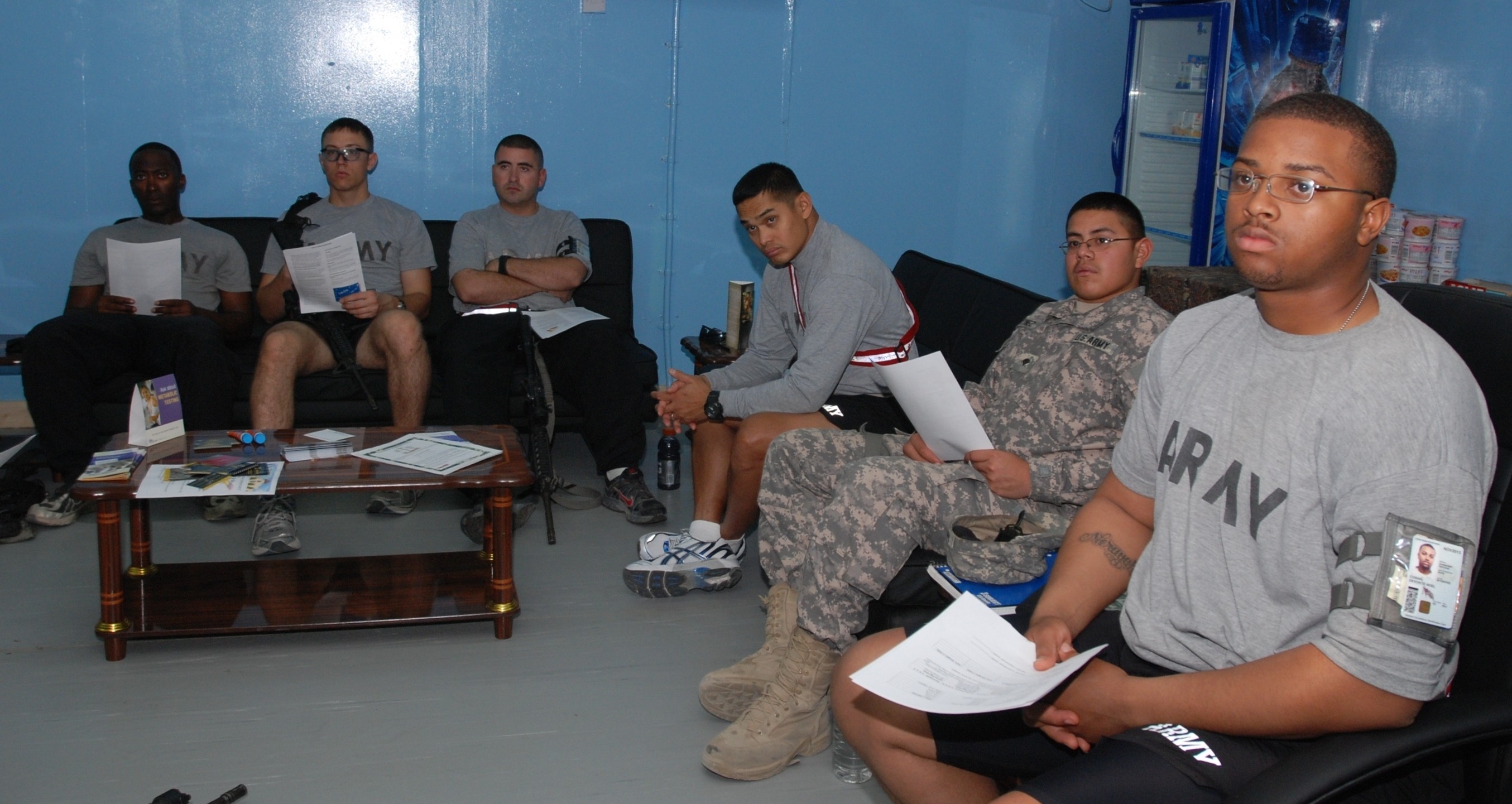
BASRA, Iraq - The United States Division - South hosted its first Victory Strong program at the USD-S Resiliency Campus from Nov. 14 to Nov. 18. The five-day event was aimed at empowering Soldiers to spread resilience throughout their units.
The initial class in the program was Master Resiliency Training, which formed the basis of the rest of the training to come by showing the students how to detect and deal with stress. Students learned about how jumping to conclusions and thinking in a negative way can affect the mission, not just on a personal level but at the unit level as well.
Sgt. 1st Class James Padilla, the NCO in charge of the Resiliency Campus and a master resiliency trainer, said that the training is the result of over 30 years of study into Soldier Fitness.
"The training enlightens the Soldiers to give them an understanding that these are some of the areas that they need to be fit," said Padilla, a Denver, Colo. native. "Not just physically fit, but comprehensively fit."
The third and fourth days covered the five pillars of Comprehensive Soldier Fitness: Physical, Emotional, Spiritual, Social and Family. Classes were given by master fitness trainers in the five areas and went into detail on how the pillars help Soldiers.
Cpt. Marlene Gubata, the physical fitness trainer for the Resiliency Campus, taught Soldiers about the role physical wellness plays on comprehensive Soldier fitness. Her classes covered nutrition, supplements and how exercise can help relieve stress.
"The class is actually quite eventful" said Gubata, a Providence, R.I. native. "There's a lot of questions and I think they're much more receptive than maybe some other classes. They came prepared to learn about it, they just seem eager to find stuff out."
Informing the Soldiers on how to deal with the situations caused by stress has shown the leadership potential in the students, said Padilla.
"Soldiers are natural born leaders, and it's something that's coming out onto the table," Padilla said. "We're starting to see that these people are able to approach situations in a positive way."
The structure and setting for the courses helps the Soldiers absorb the training more effectively, said Spc. Robert Richardson, an operations and training clerk with Headquarters and Headquarters Troop, 3rd Advise and Assist Brigade, 4th Infantry Division.
"It's a lot better than how we first received the resiliency training, in two hour blocks," said Richardson, an Oak Harbor, Wash. native. "I enjoy the setting they have here at the resiliency center. It's more relaxed than what it was for the other classes."
The change of pace can also mean a new breed of challenges, which makes Comprehensive Soldier Fitness all the more important to Soldiers at war.
"This mission is a lot different than my prior missions in Iraq," Richardson said. "It's a lot more oriented towards the Iraqis in charge. We're here as advisors on how they can do things. A lot of the Soldiers, especially in combat arms, don't know what to do with themselves and it is, in my opinion, a more stressful environment for combat arms."
Though the training is new to the military, and there are still issues to be resolved, Padilla says that the training is going to succeed in its goal of preparing Soldiers to meet the stressful challenges of the Army.
"They're going to be able to take back what they learned," Padilla said. "And not only teach it to their fellow comrades, but I think they're going to start using it on a regular basis."

Social Sharing